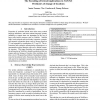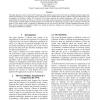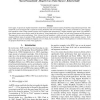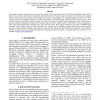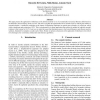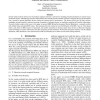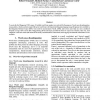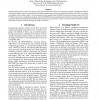LREC
2008
14 years 27 days ago
2008
This paper describes an experience with using the information contained in VerbNet to obtain change of location inferences. We show that the information is available but not encod...
LREC
2008
14 years 27 days ago
2008
This paper presents a series of tools for the extraction of specialized corpora from the web and its subsequent analysis mainly with statistical techniques. It is an integrated sy...
LREC
2008
14 years 27 days ago
2008
In this paper, we present an original framework to model frame semantic resources (namely, FrameNet) using minimal supervision. This framework can be leveraged both to expand an e...
LREC
2008
14 years 27 days ago
2008
In this paper we describe the METIS-II system and its evaluation on each of the language pairs: Dutch, German, Greek, and Spanish to English. The METIS-II system envisaged develop...
LREC
2008
14 years 27 days ago
2008
The field of automated sentiment analysis has emerged in recent years as an exciting challenge to the computational linguistics community. Research in the field investigates how e...
LREC
2008
14 years 27 days ago
2008
In this paper we present two large-scale verbal lexicons, AnCora-Verb-Ca for Catalan and AnCora-Verb-Es for Spanish, which are the basis for the semantic annotation with arguments...
LREC
2008
14 years 27 days ago
2008
This paper presents the application of inheritance to the formal taxonomy (is-a) of a semantically rich Lexical Resource (LR) based on the Generative Lexicon theory, SIMPLE-CLIPS....
LREC
2008
14 years 27 days ago
2008
Several studies indicate that the level of predicate-argument structure is relevant for modeling prevalent phenomena in current textual entailment corpora. Although large resource...
LREC
2008
14 years 27 days ago
2008
LREC
2008
14 years 27 days ago
2008
The JOS morphosyntactic resources for Slovene consist of the specifications, lexicon, and two corpora: jos100k, a 100,000 word balanced monolingual sampled corpus annotated with h...
